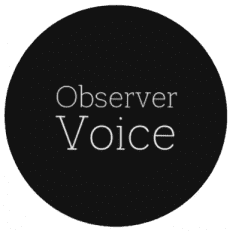Asteroid Threat Mitigated: New Data Reveals Low Collision Risk

Recent assessments by NASA’s Center for Near Earth Object Studies (CNEOS) have significantly reduced the collision risk of asteroid 2024 YR4, which was previously projected to potentially impact Earth on December 22, 2032. Initially, the asteroid’s collision probability peaked at over three percent, raising concerns about the potential damage. However, new data has now lowered this risk to under one percent, while also indicating a slight chance of it striking the Moon instead.
Observations and Behavior
A team of astronomers at NASA’s Gemini South Observatory in Chile conducted extensive observations of asteroid 2024 YR4 shortly after its discovery. Over a period of approximately six weeks in February, they studied the asteroid across various wavelengths. This celestial body, measuring nearly 60 meters in diameter, exhibits a unique flat disk shape and rotates rapidly, completing a full turn every 20 minutes. This is unusual, as most asteroids typically have irregular, potato-like shapes. According to Bryce Bolin, the lead author of the study, the asteroid likely originates from the asteroid belt located between Mars and Jupiter, which is abundant in silicate materials. Although 2024 YR4 swings close to Earth every four years, it will soon be too distant to observe with ground-based telescopes. However, the James Webb Space Telescope is scheduled to observe it again later this month or next.
Assessment of Risk through Science Data
As of now, the probability of asteroid 2024 YR4 colliding with Earth has dropped to less than one percent, effectively ruling out the possibility of an impact by 2032. Interestingly, there remains a 3.8 percent chance that it could collide with the Moon, although such an event would not alter the Moon’s orbit. This situation underscores the critical importance of monitoring near-Earth objects to identify potential threats. The recent data collection efforts have highlighted the need for ongoing surveillance of asteroid populations. By sharing scientific findings widely, researchers can better assess the risks posed by near-Earth asteroids and improve the identification of future hazards. The planetary defense community, including NASA and the Minor Planet Center, emphasizes the necessity of making data accessible to enhance global tracking and risk evaluation of these celestial bodies.
Role of Science Data in Future
In response to the ongoing need for asteroid monitoring, NASA is developing the NEO Surveyor, a groundbreaking space observatory designed to detect and assess asteroid threats well in advance. The mission is slated for launch in the fall of 2027, and the data collected will be made publicly available through NASA’s archives. James Gerbs Bauer, principal investigator at NASA’s Planetary Data System, emphasized the importance of discovering potentially hazardous near-Earth objects (NEOs). While the likelihood of an asteroid impact may be low, the consequences could be severe. Open science practices facilitate the sharing of vital data, enabling scientists to better define the risks associated with NEOs and improve the chances of identifying future impact hazards. This collaborative approach is essential for enhancing planetary defense strategies and ensuring the safety of Earth from potential asteroid threats.
Observer Voice is the one stop site for National, International news, Sports, Editor’s Choice, Art/culture contents, Quotes and much more. We also cover historical contents. Historical contents includes World History, Indian History, and what happened today. The website also covers Entertainment across the India and World.
Follow Us on Twitter, Instagram, Facebook, & LinkedIn

